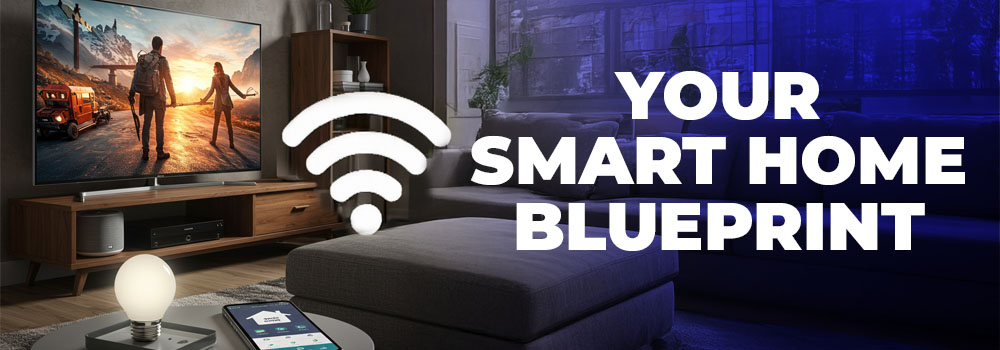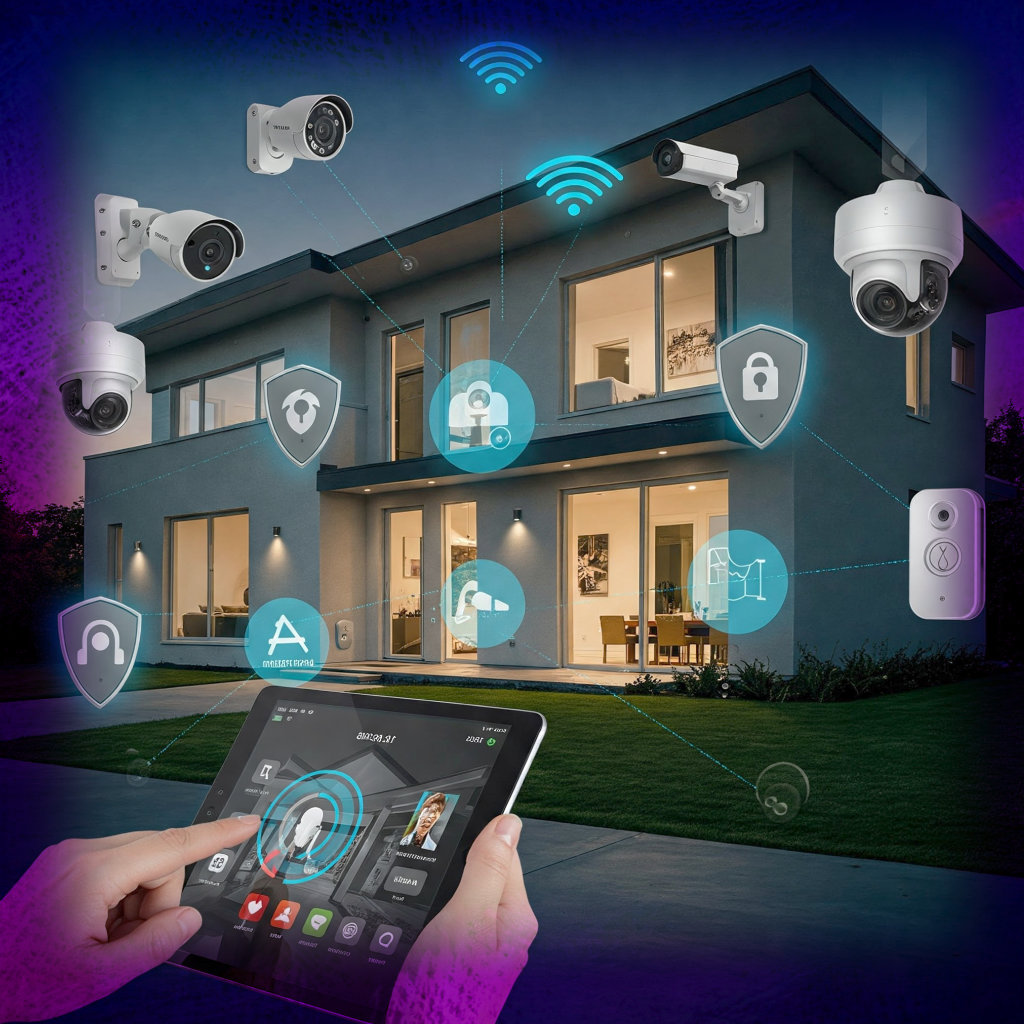1. Introduction: The Growing Importance of Smart Home Security
Smart home devices bring convenience but also introduce security risks. Hackers increasingly target vulnerable IoT gadgets—cameras, locks, and voice assistants—to infiltrate home networks. Implementing robust security measures prevents unauthorized access, data theft, and device hijacking.
2. Understanding Smart Home Vulnerabilities
Many smart devices lack built-in security, relying on weak default passwords and unencrypted communications. Poorly configured networks expose homes to cyber threats. Recognizing these weak points is the first step toward fortifying your digital ecosystem.
3. Common Threats to Smart Home Devices
3.1. Unauthorized Access and Hacking
Attackers exploit weak credentials to hijack devices. Compromised cameras or locks grant intruders physical and digital access.
3.2. Data Privacy Concerns
Smart speakers and cameras collect sensitive data. Unsecured devices risk leaking private conversations or footage.
3.3. Malware and Botnet Attacks
Hackers infect devices with malware, enslaving them in botnets for large-scale cyberattacks like DDoS.
4. Securing Your Smart Home Network
4.1. Changing Default Router Credentials
Manufacturer-set usernames like “admin” are easily guessed. Use complex, unique credentials to prevent breaches.
4.2. Enabling WPA3 Encryption
WPA3 provides stronger encryption than WPA2, shielding Wi-Fi traffic from eavesdropping.
4.3. Setting Up a Guest Network
Isolate IoT devices on a separate network to limit hackers’ lateral movement if one device is compromised.
4.4. Using a Firewall
A firewall blocks suspicious inbound/outbound traffic, adding a critical layer of network defense.
5. Strengthening Device-Specific Security
5.1. Updating Firmware Regularly
Patches fix vulnerabilities. Enable automatic updates or check monthly for firmware releases.
5.2. Disabling Unnecessary Features
Turn off remote access, cloud storage, or unused APIs to reduce attack surfaces.
5.3. Enabling Two-Factor Authentication (2FA)
2FA adds a verification step, stopping hackers even if passwords are stolen.
6. Smart Speaker and Voice Assistant Security
6.1. Reviewing Voice Recording Settings
Most smart speakers store voice interactions by default. Routinely purge these recordings through your provider’s privacy dashboard (e.g., Alexa Privacy Hub or Google My Activity). Disable cloud storage for sensitive conversations—opt for local processing where available.
6.2. Disabling Unused Microphone Access
Implement physical mute switches on devices when not in use. For software controls, create automation rules that disable microphones during sleeping hours or when leaving home. Beware of “always listening” modes that may bypass mute functions.
6.3. Preventing Unauthorized Purchases
Enable purchase confirmation PINs and disable voice shopping features. Set spending limits through linked payment platforms. Monitor transaction alerts for unexpected activity—some attackers exploit voice mimicry for fraudulent orders.
7. Securing Smart Cameras and Doorbells
7.1. Encrypting Camera Feeds
Opt for devices with end-to-end encryption (E2EE) like Apple HomeKit Secure Video. Avoid brands that transmit footage through unsecured HTTP connections. For non-E2EE cameras, route traffic through a VPN tunnel.
7.2. Disabling Remote Access When Not Needed
Configure geofencing to disable external access when phones are home. Use VLAN segmentation to isolate cameras from primary networks—this prevents compromised devices from accessing sensitive data.
7.3. Using Strong, Unique Passwords
Replace default credentials with 16+ character passphrases incorporating special characters. Avoid dictionary words—cracking tools can breach “SecurityCamera123!” in under 4 hours. Consider password managers for complex credential rotation.
8. Smart Lock and Garage Door Protections
8.1. Avoiding Default PINs
Change factory-set codes immediately. Implement temporary guest PINs with expiration dates rather than permanent shared codes. Biometric locks with fingerprint authentication reduce brute-force risks.
8.2. Enabling Auto-Lock Features
Program locks to engage after 30 seconds of inactivity. Pair with motion sensors to trigger automatic relocking when no movement is detected. This mitigates “tailgating” intrusions.
8.3. Monitoring Access Logs
Review digital audit trails weekly for unrecognized entry attempts. Suspicious patterns (e.g., 3 AM access from unknown devices) may indicate credential stuffing attacks.
9. Protecting Smart Thermostats and Appliances
9.1. Restricting Remote Adjustments
Disable unnecessary cloud connectivity—schedule temperature changes locally instead. Whitelist only authorized mobile devices for control.
9.2. Checking for Suspicious Activity
Monitor energy usage spikes that could indicate hijacked devices mining cryptocurrency. Unexpected HVAC activation during vacations may signal occupancy testing by intruders.
10. IoT Device Management Best Practices
10.1. Segmenting IoT Devices on Your Network
Create separate VLANs for different device categories (e.g., cameras, appliances, entertainment). Apply firewall rules to block inter-VLAN traffic—a breached smart TV shouldn’t access security systems.
10.2. Using a VPN for Remote Access
Replace port forwarding with enterprise-grade VPN solutions like WireGuard. This encrypts all smart home traffic when accessing devices remotely.
10.3. Regularly Auditing Connected Devices
Monthly network scans using tools like Fing identify rogue devices. Check MAC addresses against manufacturer lists—an unknown “Philips Hue” device could be an impersonation attack.
11. Recognizing and Preventing Phishing Attacks
11.1. Identifying Fake Smart Home App Notifications
Legitimate alerts never request credentials via pop-ups. Hover over links to verify domains—”amaz0n-smart-login.com” is clearly spoofed.
11.2. Avoiding Suspicious Links
QR code scams are rising—verify physical tags before scanning. Treat unexpected “firmware update” emails as hostile until confirmed through official apps.
12. Child and Guest Safety Considerations
12.1. Restricting Access to Sensitive Devices
Create limited-permission profiles for children/guests using IFTTT rules. For example: “If guest mode active, disable door lock controls after 9 PM.”
12.2. Setting Up Parental Controls
Use DNS filtering like OpenDNS to block smart devices from contacting malicious domains. Schedule internet cutoffs for children’s devices during study hours.
13. The Role of Smart Home Hubs in Security
13.1. Choosing a Secure Hub
Prioritize hubs with Matter/Thread support—their standardized encryption outperforms proprietary protocols. Avoid discontinued platforms (e.g., Insteon) lacking security updates.
13.2. Keeping Hub Software Updated
Enable automatic update checks. Legacy Z-Wave hubs may require manual patches—subscribe to manufacturer security bulletins.
14. Backup and Recovery Strategies
14.1. Backing Up Device Configurations
Export automations and settings monthly to encrypted external storage. This facilitates rapid restoration after factory resets.
14.2. Preparing for a Security Breach
Maintain an incident response plan:
- Immediate network isolation
- Credential resets via pre-authorized secondary device
- Forensic logging before device wipes
15. Future-Proofing Your Smart Home Security
Adopt Zero Trust principles—require authentication for every device communication. Explore AI-powered anomaly detection systems that flag unusual behavior patterns across connected devices.
16. Conclusion: Building a Resilient Smart Home Ecosystem
Layered defenses transform smart homes from vulnerable targets into hardened environments. Regular audits, network segmentation, and strict access controls create sustainable protection as IoT threats evolve.

